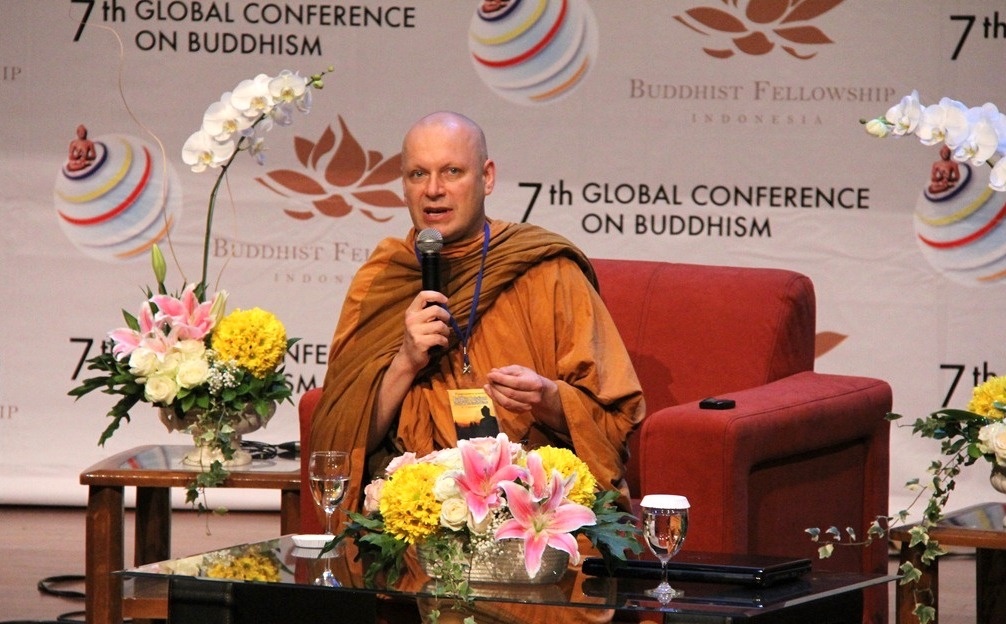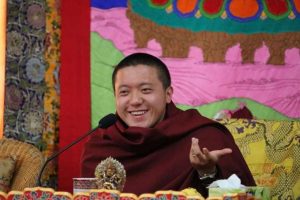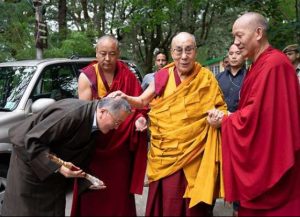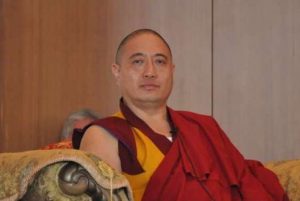
Like his teacher Ajahm Brahm, Norwegian-born Ajahn Brahmali is unafraid to speak his mind, not only with students and fellow Buddhists, but also at the broader level of Buddhism and morality. This honesty famously cost Ajahn Brahm his institutional connections in Thailand when he came out in support of bhikkhuni ordination in 2009. I think it is safe to say that none in Ajahn Brahm’s circle, including Ajahn Brahmali, have much in common with their former community at Wat Pah Pong anymore. Though the events are now relatively distant memories, the ramifications can still be felt today, not least in the conversations that circulate within Theravada circles about the future relationship between the male sangha and women.
Ajahn Brahmali has a fascinating take on his preceptor’s excommunication in Thailand. “Getting thrown out of Wat Pah Pong, of course that came as a shock. It doesn’t feel good when you’re thrown out of a system,” he said. He had just finished a Day of Kindfulness* at The University of Hong Kong in November last year, and his sojourn with me in a hotel lobby had turned into a long reflection about his moral convictions. “You lose your mates, your friends, you feel abandoned. But the system itself wasn’t really that appropriate! If you look at the monastic Vinaya, the early sangha, as the Buddha laid it down, was almost completely flat. There was no hierarchy at all. Even the position of abbot didn’t exist,” he said.
“Yet Buddhism in Thailand is hierarchical—you have a sangharaja at the top, you have a council, you have someone controlling you. Hierarchies are always very corrupting, and power, position, and money become very important. After a while, I realized that there was something very positive: we were independent; we could react to local demands. We were no longer controlled by an umbrella organization. The overall outcome, to be honest with you, was probably positive. We got bhikkhuni ordination, and we got the bonus of institutional independence!” he said with a mischievous twinkle in his eye.
Born in 1964, Ajahn Brahmali had no Buddhist friends or contacts while growing up in Norway, although when he was 12 he did fantasize about living in a hut in the forest. His first exposure to Buddhism came during a university trip to Japan, where he came across Buddhist temples and statues in Kyoto and Nara. Later, a friend loaned him a book on the mindfulness of breathing and breath meditation, and he was very happy with the results of practicing the exercises prescribed—“Wow, this is really cool,” he recalls thinking.
After completing a degree in finance, which he did not find very meaningful, he contacted the Buddhist Society in London and went to practice as an anagarika at Amaravati Monastery in Britain. Further exploration led him to Bodhinyana Monastery in Western Australia in 1993, and by 1996 he had ordained as a monk with Ajahn Brahm as his preceptor. Two years later, in 1998, the Buddhist world was shaken when several Sri Lankan women were ordained as Theravada bhikkhunis by Chinese nuns.** Ajahn Brahmali maintains that he was an early supporter of the movement, indeed urging Ajahn Brahm to speak out long before the latter took the plunge. “I said to him that we wouldn’t be on the right side of history if we didn’t do so,” he recounted. “He agreed.” As a Theravada monk living in Australian society, he felt it was particularly crucial that Ajahn Brahm’s community deal with matters pertinent to the progress of that society, despite them having ordained in Thai trappings.
“True, we have our roots in Thailand, but once you move outside of Thailand you have to adapt to local circumstances and not be stuck in the past. I think this was how Buddhism functioned originally. Every sangha has the autonomy to look after its own affairs. It was never hierarchical, so each sangha could react as it saw fit to local affairs.” As far as he is concerned, the long-term survival of the sangha in Australia requires the sangha to have a sense of equality rather than hierarchy. The “weirdness” about Buddhism, as Ajahn Brahmali puts it, is that it is one of the few religions in which women (through the Buddha’s aunt Mahaprajapati) are present from the beginning, historically, with men. “And yet now we’re lagging behind! The Church of Norway, for example, has a woman as its head!” he observed, taking care to emphasize that this was not a token gesture of simply ordaining female priests or even bishops, but the church’s leader.
I asked Ajahn Brahmali why resistance seemed to be growing in reactionary echelons to the seemingly inevitable tide of female monasticism, but he disagreed with this framing. “I don’t think it’s becoming stronger. As monasticism for women becomes a reality, the voices against it naturally start to become more prominent. There’s nothing to talk about when there are no female ordinations, but once people start saying, ‘Hey, this is really going on,’ then people who don’t like them start to speak out.” He thinks there is a groundswell of support for bhikkhuni ordination everywhere and that the average Thai monk is actually quite supportive. He also noted that one senior Thai monk had divulged that 80 per cent of male monastics in Thailand were quite happy about the growth of the bhikkhuni order.
“So you will hear these very conservative voices who might be senior or high up in the hierarchy. But it’s like a lid that suppresses all other opinions—take that lid off and you have no idea what’s going to happen,” said Ajahn Brahmali, who feels quite optimistic that Theravada Buddhists will keep on the right side of history. “I know for certain that the Ajahn Chah tradition strongly objected to what Ajahn Brahm did, but the vast majority of monks even within that school are probably supportive. But the voices you hear are at the top, and for that reason it seems as if there is this united front against bhikkhunis, while in reality the situation is completely different.”
Is Ajahn Brahmali playing politics? Perhaps. He admits that there will always exist a political undertone when discussing big ideas. “But you don’t talk about politics as such, you talk about moral issues,” he said, emphasizing that if other people choose to mischaracterize his speaking out on moral issues such as feminism and climate change as playing politics, it is their problem. Remembering this distinction has, over the years, helped him to maintain a calm, clear, and consistent voice about the moral matters at the heart of Buddhism. Perhaps this is a distinction that more Buddhists should keep in mind as our Vehicles focus on issues of great moral urgency—not only that of female monasticism, but humanity’s very future on this planet.
* Kindfulness is a five-stage meditative technique coined by Ajahn Brahm that focuses on awareness of the present moment and awareness of the breath.
** Four conditions need to be present for the legitimate ordination of nuns: all monastics within a given monastic boundary are present, none of the candidates may be disqualified (such as being underage, in debt, or disabled), the procedure needs to be chanted correctly, and there must be an adequate quorum. The final rule hearkens back to the Buddha’s ancient ruling that a nun must be ordained by a sangha of bhikkhunis and then a council of bhikkhus. Not only were all four rules fulfilled in 1998, but also the quorum of dual ordination has been repeatedly demonstrated to be valid by some of the finest minds in Buddhist scholarship. The Chinese bhikkhunis carrying out the ordination followed the Dharmaguptaka Vinaya and were therefore legitimate nuns, and there is no legal impediment preventing a monk or nun of a Vehicle or even school (as opposed to Vinaya) from performing their Vinaya’s act of governance with a monk of another “sect.” The Theravada and Dharmaguptaka rules were therefore upheld, both councils of monks and nuns oversaw the ordination as the Buddha laid out, and Theravada/Mahayana doctrinal distinction did not invalidate the ordination. See Ven. Analayo’s seminal essay, “The Revival of the Bhikkhuni Order and the Decline of the Sasana.”














